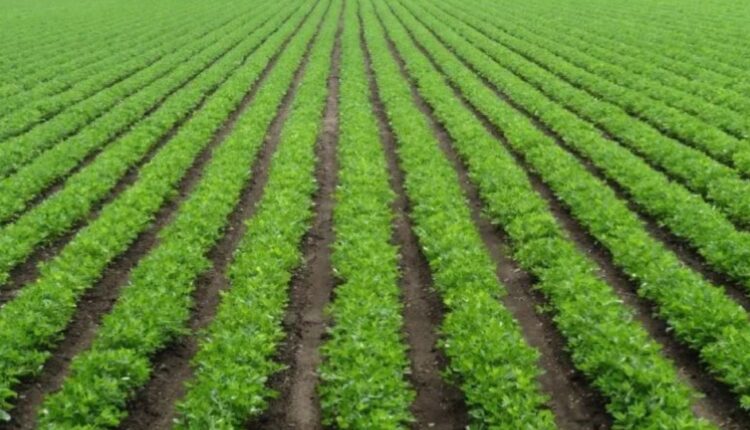Water Management Strategies for Groundnut: An Effective Guide for Drought-Prone Areas
Groundnut is a major oilseed crop in many parts of India, especially in states like Rajasthan, Gujarat, Telangana, Karnataka, and Andhra Pradesh, where erratic rainfall and water scarcity are major challenges. In such drought-prone regions, efficient water management is becoming the key to both yield and quality. This article discusses practical, scientific, and accessible water management strategies for groundnut cultivation, keeping Indian conditions in mind.
Why Is Water Management Necessary for Groundnut Cultivation in Drought-Prone Areas?
• Groundnut has deep roots, which allows it to tolerate some level of drought, but there are certain “critical stages” of the crop when the availability of water is absolutely essential.
Low rainfall, uneven distribution, and lack of water storage limit groundnut production in many semi-arid and arid regions of India.
Complete dependence on rainfall puts production at risk — if there is continuous drought after sowing or if it doesn’t rain during flowering and pod formation, the yield can drop significantly.
Lack of soil moisture hinders nutrient absorption, weakening the plant and increasing vulnerability to diseases.
• Due to limited availability of irrigation water, every drop must be used wisely, so that wastage is minimized and maximum benefit is achieved with minimum resources.
Water Management Strategies
1. Mulching: The Art of Retaining Soil Moisture
What is Mulching?
Mulching means covering the surface of the soil with organic (such as dry grass, leaves, husk) or inorganic (plastic sheet) materials. Apply organic mulch immediately after sowing — even leftover residues from harvested groundnut plants can be used.
Benefits:
Reduces water loss due to evaporation
Helps in weed control
Regulates soil temperature
• Reduces runoff of rainwater
2. Rainwater Harvesting: Every Drop Counts
What to do?
• Create bunds along the borders of fields so that rainwater can accumulate and slowly seep into the soil
Construct farm ponds to store excess rainwater
• Use rainwater diversion channels to direct water toward the lower portions of the field
3. Controlled Irrigation and Timing of Critical Stages
There are certain stages in the growth of groundnut where water is absolutely critical. If water is not available at these stages, yield can drop significantly.
If even one irrigation is provided during flowering and pod formation, yield can increase by 25–30%.
4. Crop Rotation and Intercropping
• Intercrops like pearl millet + groundnut or pigeon pea + groundnut ensure better use of available water
Growing deep-rooted crops alongside groundnut helps maintain soil moisture
• This also improves soil fertility and provides an additional income source for farmers
5. Ridge and Furrow Method: Supports Both Water Conservation and Crop Growth
What is this method?
The field is divided into raised beds (ridges) and deep trenches (furrows). Groundnut is sown on the ridges, and rain or irrigation water is stored in the furrows.
Benefits:
• Rainwater does not run off; it collects in the furrows
Ensures water supply reaches the roots
Prevents waterlogging, which could rot roots
• Especially effective in fields with a gentle slope
6. Biochar and Organic Soil Amendments: Improve Water-Holding Capacity
What is Biochar?
A black, carbon-rich material made by burning organic waste at a controlled temperature, added to the soil to enhance its properties.
Benefits:
• Increases soil’s water-holding capacity
Helps plants retain moisture longer, even with less water
Improves soil structure and nutrient availability
• When mixed with cow dung manure or vermicompost, the effect is doubled
How to use it?
Mix 5–10 quintals of biochar per acre into the soil before plowing. This is especially effective in sandy soils, like those in parts of Rajasthan.
Practical Tips and Local Knowledge
• Irrigate in the early morning or late evening to reduce water loss
Use micro-irrigation systems like drip irrigation where possible
• Run village-level awareness campaigns like “Save Water, Save Crops”
Broader Benefits of These Strategies
1. Increases crop yield by 20–40%
2. Reduces irrigation needs by 30–50%
3. Helps control weeds and soil erosion
4. Promotes environmental balance and climate-resilient farming
Concrete Recommendations for the Government and Agricultural Scientists
1. Village-Level Training Programs:
• Organize farmer training at block or panchayat level on water management and sustainable farming
• Workshops should be example-based and in regional languages with participation of local farmers
2. Increase Subsidy on Farm Ponds and Rainwater Harvesting Structures:
• Make schemes like PMKSY (Pradhan Mantri Krishi Sinchayee Yojana) more effective by providing up to 80% subsidy for small and marginal farmers
• Relax land ownership rules for pond construction
3. Financial Support for Mulching Materials and Drip Irrigation Equipment:
• Provide collective mulching rolls or plastic sheets to farmer groups at the village level
• Promote loans or rental models for drip and sprinkler irrigation systems
4. Involvement of KVKs and NGOs:
• Assign KVKs (Krishi Vigyan Kendras) the responsibility to develop and demonstrate local water management solutions
• Engage rural SHGs (Self Help Groups) in biochar production and distribution
Every drop of water can shape the future of millions of Indian farmers.
Crops like groundnut, which can yield well even with limited water, have the potential to not only enhance farmers’ incomes but also contribute to India’s edible oil self-sufficiency — provided the right strategies and government support are in place.
What is needed now is a synergy of policy, science, and ground-level wisdom.
And that will only happen when every farmer, every village, and every policymaker treats water not just as a resource — but as a legacy to preserve.
Contact us- If farmers want to share any valuable information or experiences related to farming, they can connect with us via phone or whatsApp at 9599273766 or you can write to us at [email protected]. Through Kisan of India, we will convey your message to the people, because we believe that if the farmers are advanced then the country is happy.
You can connect with Kisan of India on Facebook, Twitter, and WhatsApp and Subscribe to our YouTube channel.



